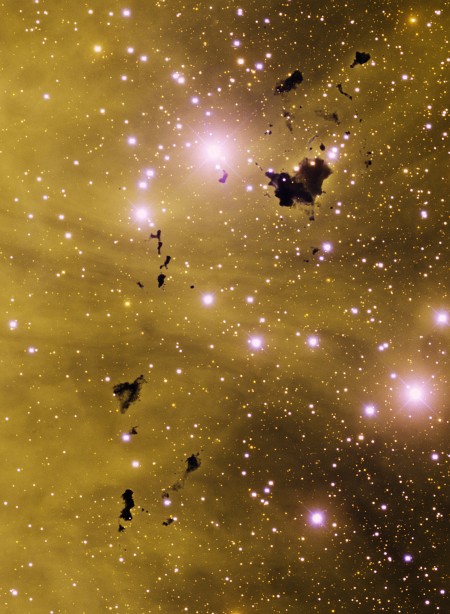Space: Check Out Thackeray’s Globules, Or The Biggest Dust Bunnies Evar.
Oh, sexy. Check out Thackeray’s Globules. They’re so shiny. And enormous. And something? Not sure where I’m going with this conceit. Anyways, behold interstellar dust clouds, the largest of which are a goddamn light-year wide.
NASA:
These are larger dust bunnies than you will find under your bed. Situated in rich star fields and glowing hydrogen gas, these opaque clouds of interstellar dust and gas are so large they might be able to form stars. Their home is known as IC 2944, a bright stellar nursery located about 5,900 light years away toward the constellation of Centaurus. The largest of these dark globules, first spotted by South African astronomer A. D. Thackeray in 1950, is likely two separate but overlapping clouds, each more than one light-year wide. Along with other data, the above representative color image from the 4-m Blanco telescope at Cerro Tololo, Chile indicates that Thackeray’s globules are fractured and churning as a result of intense ultraviolet radiation from young, hot stars already energizing and heating the bright emission nebula. These and similar dark globules known to be associated with other star forming regions may ultimately be dissipated by their hostile environment — like cosmic lumps of butter in a hot frying pan.
Purdy stuff.




